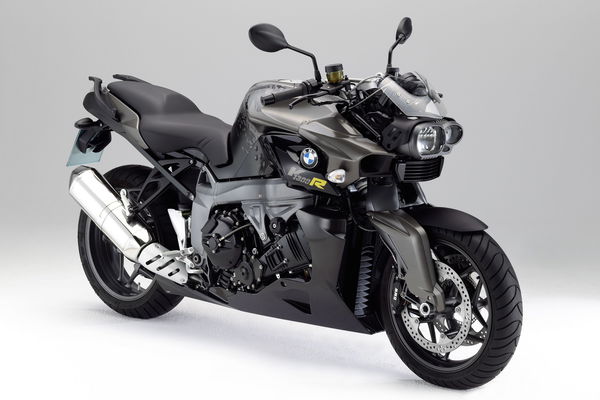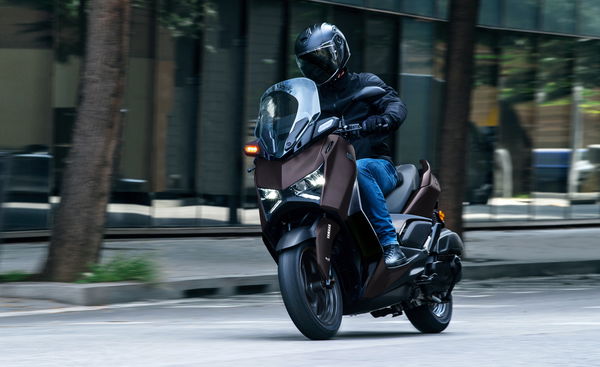Top 10 race bikes of 2015
Never mind the riders, which machines have impressed the most during 2015?

IT’S easy enough to pick out the star bike racers of the last year – they’re the ones with world championships to their names and trophy shelves that are cracking under the strain of the silverware they’re loaded with – but which bikes have impressed most of all?
On reflection it’s a tougher question than it first appears. Our initial thoughts were simply to rate them based on race wins, but that gives an advantage to bikes running in championships with more rounds. Then we considered ranking them based on their win ratio – what percentage of wins did they get from the total number of races entered? Better, but such a formula creates a natural bias to models that dominate the entry lists.
So we’ve come up with a formula that takes the percentage of races that each bike has won divided by the percentage of the grid that model makes up. So if a particular model somehow made up 100% of the field, and hence won 100% of the races, it would score an overall figure of 1. If a model that made up 50% of the grid managed to win 100% of the races, it would score 2. Grid sizes are calculated using full-time riders
Sure, it’s still open to argument – there’s bound to be plenty in the comments below – but it’s something approaching a ‘fair’ system that eliminates variables to show up which bikes performed the best over the course of the season.
We’ve taken our shortlist from the bikes that won rounds of the most high-profile international championships – MotoGP, Moto2 and Moto3 plus WSBK and WSS – to ensure that we’re comparing machines helmed by the best riders and prepared by the best teams.
��
10. Ducati Panigale R, WSB. Win ratio: 19.23%, bike ratio: 20.83%. Total score - 0.92
With five wins from 26 rounds of the WSBK series in 2015, the Panigale still trailed a long way behind the victorious Kawasaki ZX-10R that swept all before it during the year. While its points total took Ducati to second in the superbike manufacturer standings, Ducatis made up a significant proportion of the grid, bringing the overall score down a bit under our system.
9. Kawasaki ZX-6R, WSS. Win ratio: 41.66%, bike ratio: 37.5%. Total score - 1.11
The World Supersport championship topped a great year for Kawasaki in 2015, coming alongside the firm’s dominance of the Superbike class, and was achieved with an impressive win ratio – Sofuoglu took five of them, or 41.66% of the races – but the fact that nine of the 24 full-time bikes on the grid were Kawasakis works against the bike’s overall score. Still, it’s a strong performance given that Honda CBR600s made up an even greater proportion of the grid and accounted for fewer wins.
8. Kalex, Moto2. Win ratio: 94.44%, bike ratio: 73.33%. Total score - 1.29
If we’d opted to pick a winner purely on the basis of the total ratio of victories, the Kalex would have been the outright number one on this list. After all, the stats show that it won 17 races in an 18-round championship. But given that 22 of the 30 full-time bikes on the grid (we haven’t included wildcards) were from the same brand, it was always pretty much guaranteed to take a good proportion of victories.
7. Aprilia RSV4 RF, WSB. Win ratio 11.54%, bike ratio: 8.33%. Total score - 1.39
There couldn’t be a bigger contrast between the Aprilia and the Kalex. Where the previous bike dominated both the grids and the wins, the RSV4 accounted for just two full-time spots on the WSBK grid in 2015, which makes the fact it won three of the 26 rounds more impressive, even though the firm is probably disappointed with its results in the championship.
6. KTM RC250, Moto3. Win ratio: 38.88%, bike ratio: 23.53%. Total score - 1.65
KTMs accounted for only eight of the 34 bikes on the Moto3 grid but still achieved seven wins from the 18 rounds, and even though it wasn’t enough to take the manufacturers title, that’s an achievement that pushes the Austrian bike up under our ad hoc ranking system. Miguel Olivera’s late season run of victories (and Honda rider Danny Kent’s second-half slump) has to take much of the credit, though.
5. Honda RC213V, MotoGP. Win ratio: 38.88%, bike ratio: 23.53%. Total score - 1.65
The two-tier nature of MotoGP in 2015 threw an extra spanner into the works for our ranking system. Should we count the open-class RC213V-RS as a separate model or wrap it in with the ‘factory’ class machines? We solved the problem by eliminating the open class from our figures entirely. As such, the four factory-spec RC213Vs, in a field of 17 factory machines, made up 23.53% of the bikes, while their seven victories were 38.88%. Not the best of years by Honda standards, but most of us would be more than happy with that sort of record.
4. Honda NSF250R, Moto3. Win ratio: 61.11%, bike ratio: 35.29%. Total score - 1.73
Honda and KTM split the wins between them in Moto3 in 2015, with six each for Danny Kent and Miguel Olivera, but while Olivera was responsible for almost all the KTM victories, Honda riders other than Kent accounted for five wins, helping boost the bike’s total to 11 from 18 races. Not many machines, even on this list, have won more than 50% of the races they’ve entered, particularly when they're models that make up far less than half the grid.
3. MV Agusta F3, WSS. Win ratio: 25%, bike ratio: 12.5%. Total score - 2
MV Agusta only managed third in the WSS championship in 2015, behind Kawasaki and Honda, but our system puts the achievement of the F3 above those of its rivals because there were just three of the bikes on the grid compared to 9 ZX-6Rs and 11 CBR600RRs. Had Jules Cluzel not been ruled out of the last three rounds thanks to injuries, the MV would likely have added to the three wins he’d already taken by that stage, too.
2. Kawasaki ZX-10R, WSB. Win ratio: 69.23%, bike ratio: 29.16%. Total score - 2.37
We really thought that the ZX-10R would take the number one spot on this list – after all, it’s had the sort of dominant season in WSBK that any team must dream of, winning 18 of the 26 races and sewing up the title long before the season’s end. But even though every one of the ZX-10R’s podiums came from the works team of Rea and Sykes, there were five other Kawasakis regularly on the grid, and that’s dragged down the performance under our equalisation system.
1. Yamaha M1, MotoGP. Win ratio: 61.11%, bike ratio: 23.53%. Total score - 2.59
While 11 wins from 18 races doesn’t sound as impressive as the ZX-10R’s 18 wins from 26, the fact that there were only four M1s in the 17-strong ‘factory’ class of MotoGP means the win-per-bike-per-start ratio is the highest of all. Given the strength of the field – not only including the might of Honda but an increasingly impressive batch of Ducatis and occasionally surprising brace of Suzukis – as well as the fact that all the top-level factory bikes were ridden by bona fide ‘aliens’ this season, the M1’s championship was truly well-deserved.
Want more?
Top 10 most powerful naked bikes











